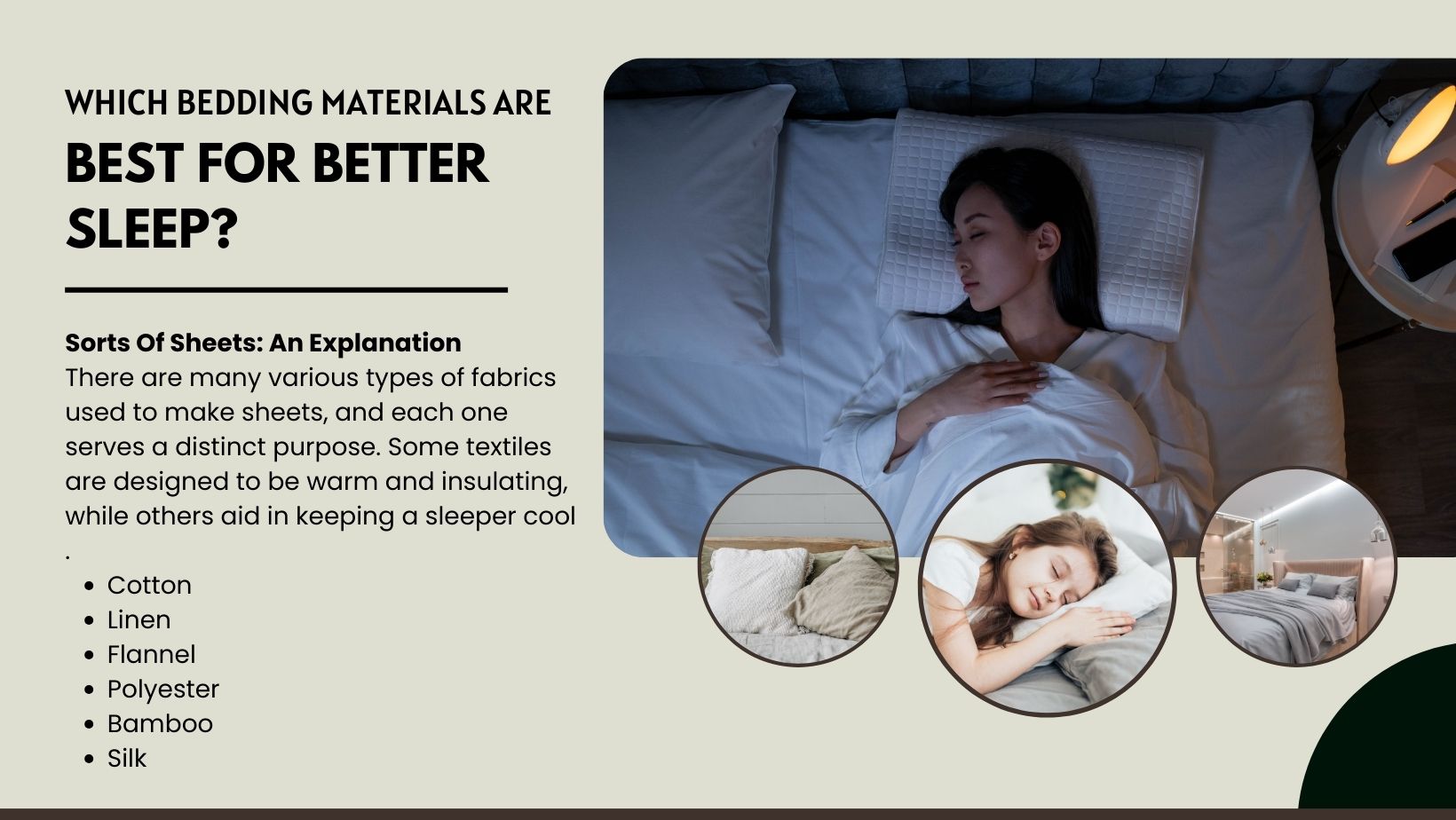The material & weave of a sheet influences its characteristics and functionality. For instance, some kinds of bedding materials are cold and ventilated, whereas others are often thick and insulating. The ideal material for bed linens ultimately boils down to the requirements and tastes of individual sleepers. While 100% mulberry silk and Egyptian cotton are known to produce high-quality sheets, there isn’t one ideal material for all types of sheets. Rather, the most premium material is the one which most suits your requirements and tastes. Many materials, such as rayon derived from bamboo, cotton, linen, and polyester, are used to make sheets. They are further weaved in several different manners.
A sheet’s feel and performance are influenced by both weave and material. We’ll examine the materials and weaves that are frequently employed to make sheets, emphasising qualities like softness, breathability, and the capacity to drain away moisture. To help you choose the ideal sheets for what you require, we’ll also go over common metrics used by manufacturers to characterise their sheets. To get the best of the best bedding linens for your sleep, you should consider getting in touch with T & A commercial bed linen UK.
Sorts Of Sheets: An Explanation
There are many various types of fabrics used to make sheets, and each one serves a distinct purpose. Some textiles are designed to be warm and insulating, while others aid in keeping a sleeper cool. Certain materials seem opulent, while others are attractive because of their affordability. We’ll examine popular sheet materials and the kinds of sleepers that they’re best for.
Cotton
The most popular material for sheets is cotton. In general, cotton is quite breathable and adept at wicking away moisture. Cotton sheets are also usually simple to keep and long-lasting. There are several varieties of cotton and different weaves for fabrics, each with unique qualities.
Linen
The flax plant, which yields long fibres for textiles, is the source of linen. Linen is hence quite durable. Linen sheets are a great option for those who want to regulate their body temperature effectively because of their exceptional breathability & moisture-wicking qualities. Although they may feel a little rough at first, new linen sheets soften with repeated washings. Although linen creases rapidly, you may iron your sheets to give them a smooth, crisp look. If you’re searching for an all-natural, hypoallergenic sheet that has excellent heat regulation, linen is a terrific choice. But compared to sheets composed of other fabrics, linen sheets are typically more expensive.
Flannel
Frequently thick and plush, fleece bedding materials provides superior heat retention. Flannel describes a method rather than the source of a textile’s materials. A cloth is brushed to give it more thickness and softness that improves the fabric’s insulating qualities, to create flannel. The majority of flannel sheets are composed of cotton, while they can also be made of wool, cotton, or synthetic fibres. Flannel sheets were an excellent option for those who prefer sleeping cold at night or during cooler months because they are usually fairly priced.
Polyester
The majority of clothes and bedding are composed of polyester, a synthetic substance derived from plastic fibres. Polyester sheets are reasonably priced, and machine-washable, along with a low wrinkling resistance. Polyester sheets don’t breathe well, therefore they might not be the best choice for people who want to sleep cool. Certain sleepers might discover polyester to be uncomfortable since it retains moisture. Similar to apparel, blends of polyester and cotton improve temperature management and provide a softer feel than pure polyester.
Bamboo
Seldom are bamboo sheets manufactured from bamboo fibres. Rather, they are constructed from rayon, a substance that is chemically extracted from bamboo pulp. Sheets made from bamboo are incredibly soft and have exceptional ventilation, which makes them a wonderful option for people who prefer sleeping cool. In addition, the sheets have some flexibility and are reasonably durable. Cotton sheets are typically less expensive than bamboo rayon bedding. Some producers might promote the sustainability or greenness of their bamboo-based sheets. However consumers ought to be conscious that bamboo is processed into rayon using harmful chemicals.
Silk
The opulent fabric known as silk originates from the cocoons of silkworms. Because silk is hypoallergenic and has a silky texture, it is a fantastic option for those with delicate skin types and sleepers who like very soft bedding. Silk also wicks moisture well and regulates temperature exceptionally well.
Final Words
Making the right bedding material choice is essential to getting a good night’s sleep. You can choose fabrics like silk for opulent comfort, cotton for ventilation, or moisture-wicking blends for regulating your temperature, based on what you want. In the end, the ideal mattress material for improved sleep is the one which promotes the peaceful sleep you need and corresponds with your unique demands. Visit Reviews auction for more interesting articles.
